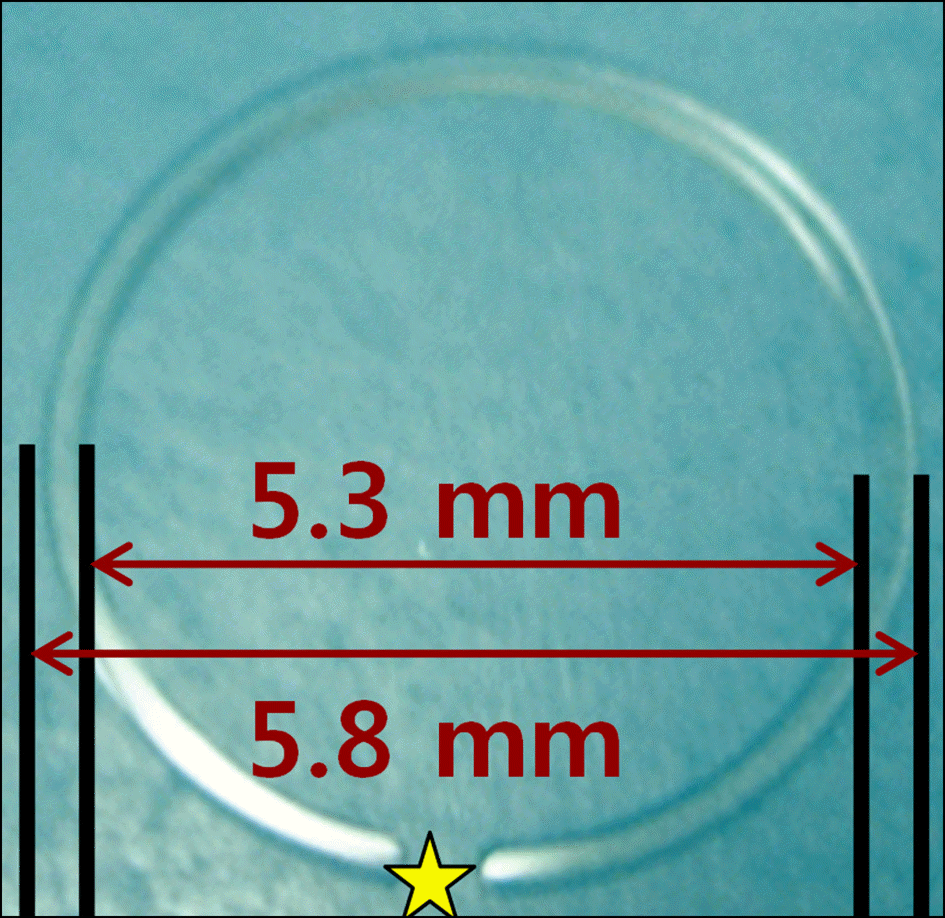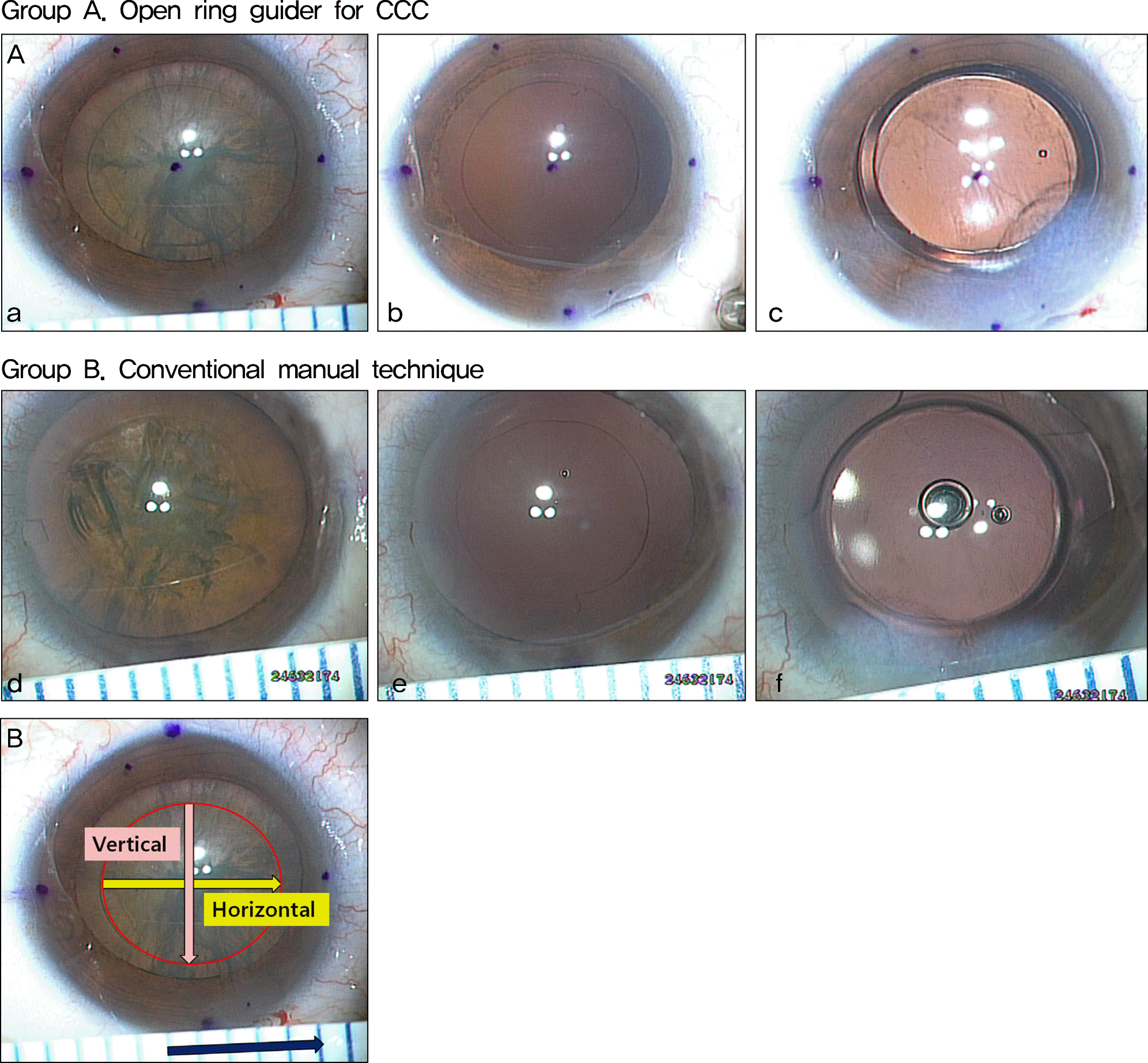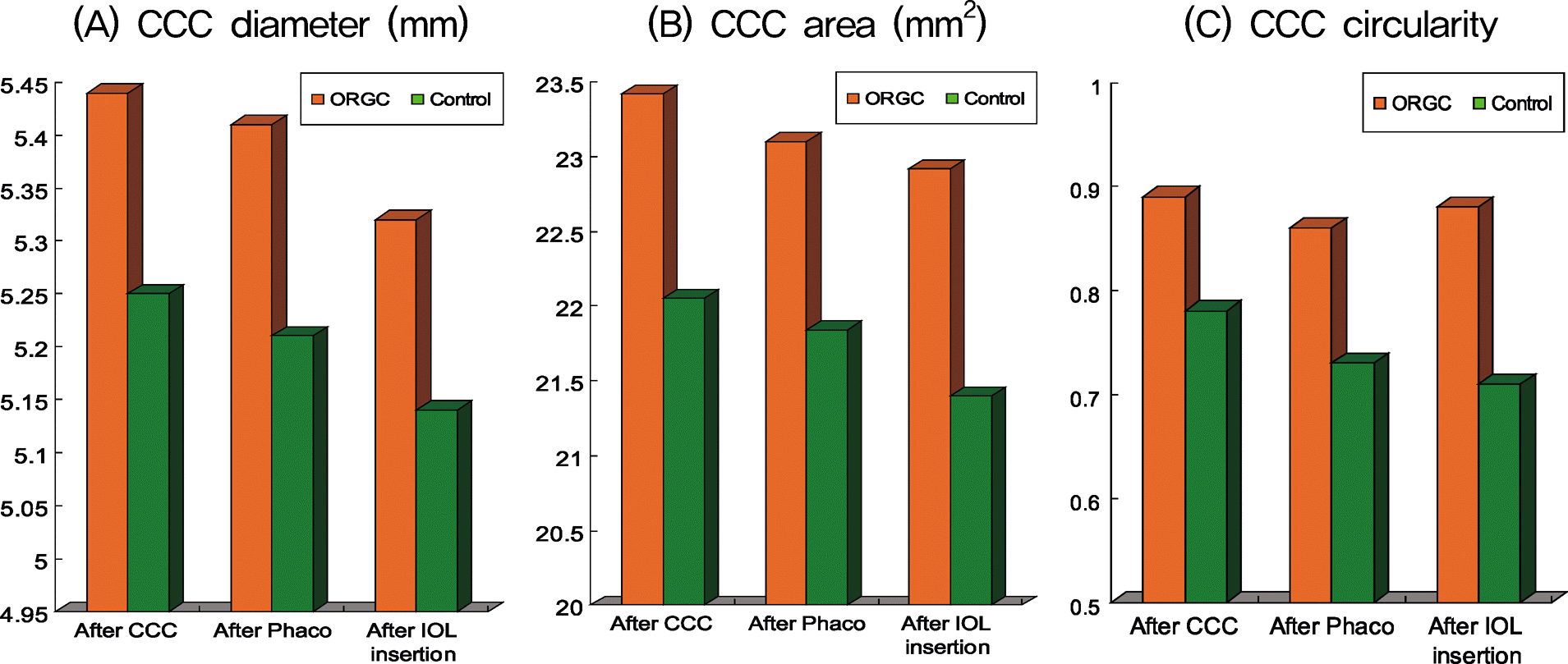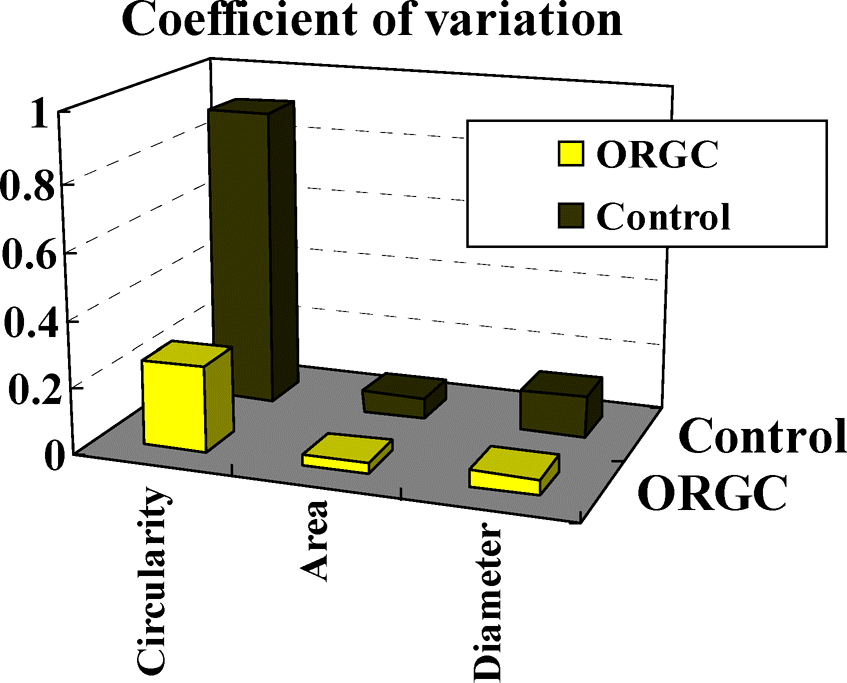Abstract
Purpose
To compare the size, circularity and repeatability between the conventional manual technique and the open-ring guided continuous curvilinear capsulorrhexis (CCC) technique in cataract surgery.
Methods
The present study comprised 120 eyes divided into two equal groups. In the first group (group A), CCC was performed using a 5.3-mm open ring-shaped caliper and in the second group (group B), CCC was performed using the conventional manual technique. Photographs were taken after each surgical step (CCC, phacoemulsification, Intraocular lens insertion and corneal stromal hydration). The diameter, area and circularity of the anterior capsule were compared between the two groups.
Results
The anterior capsule diameter was 5.32 ± 0.26 mm for group A (coefficient of variation 0.049) and 5.14 ± 0.64 mm for group B (coefficient of variation 0.125); the area was 22.9 ± 0.71 mm2 for group A (coefficient of variation 0.031) and 21.40 ± 1.37 mm2 for group B (coefficient of variation 0.064). Circularity was 0.93 ± 0.24 for group A (coefficient of variation 0.258) and 0.86 ± 0.78 for group B (coefficient of variation 0.907).
References
1. Gimbel HV, Neuhann T. Development, advantages, and methods of the continuous circular capsulorhexis technique. J Cataract Refract Surg. 1990; 16:31–7.

3. Eom Y, Kang SY, Kim HM, Song JS. A survey report on cataract surgical experiences during ophthalmology residency in Korea. J Korean Ophthalmol. 2011; 52:429–33.

4. Masket S. Postoperative complication of capsulorhexis. J Cataract Refract Surg. 1993; 19:721–4.
5. Nishi O, Nishi K. Intraocular lens encapsulation by shrinkage of the capsulorhexis opening. J Cataract Refract Surg. 1993; 19:544–5.

6. Aykan U, Bilge AH, Karadayi K, Akin T. The effect of capsulorhexis size on development of posterior capsule opacification: small (4.5 to 5.0 mm) versus large (6.0 to 7.0 mm). Eur J Ophthalmol. 2003; 13:541–5.

7. Langwmska-Wosko E, Bronike-kowalik K, Szulborski K. The impact of capsulorhexis diameter, localization and shape on posterior capsule opacification. Med Sci Monit. 2011; 17:CR577–82.

8. Budning A, Rosen J. The elastic properties of the lens capsule in capsulorhexis. Am J Ophthalmol. 1991; 112:474–5.

9. Thim K, Krag S, Corydon L. . Stretching capacity of capsu- lrhexis and nucleus delivery. J Cataract Refract Surg. 1991; 17:27–31.
10. Colvard DM, Dunn SA. Intraocular lens centration with continuous tear capsulotomy. J Cataract Refract Surg. 1990; 16:312–4.

12. Smith SR, Daynes T, Hinckley M. . The effect of lens edge design versus anterior capsule overlap on posterior capsule opacification. Am J Ophthalmol. 2004; 138:521–6.

13. Tassignon MJ, De Groot V, Vrensen GF. Bag-in-the-lens implantation of intraocular lenses. J Cataract Refract Surg. 2002; 28:1182–8.

16. Dick HB, Peña-Aceves A, Manns M, Krummenauer F. New technology for sizing the continuous curvilinear capsulorhexis: prospective trial. J Cataract Refract Surg. 2008; 34:1136–44.

Figure 1.
Open Ring Guider for CCC: Inflexible polymethyl methacrylate caliper ring with an internal diameter of 5.3 mm and external diameter of 5.8 mm. It is easy to insert in the eye because of the shape of an open ring (yellow star).

Figure 2.
(A) Group A was performed by using a 5.3-mm ORGC (a. after CCC, b. after phacoemulsification, c. after IOL insertion and corneal stromal hydration). Group B was performed by using conventional manual technique (d. after CCC, e. after phacoemulsification, f. after IOL insertion and corneal stromal hydration). (B) Image J's graphic program to measure the diameter, area and circularity of anterior capsule were compared between two groups. (A) Photos were taken after each surgical step. (B) Measuring the diameter, area and circularity of anterior capsule.

Figure 3.
Comparison between two groups regarding to the calculated CCC parameters after final step, IOL implantation and corneal stromal hydration stage during cataract surgery.

Figure 4.
The coefficient of variation (CV) represents the CCC repeatability that is defined as the ratio of the standard deviation to the mean, it is a helpful statistic in comparing the degree of variation from one data series to the other. It was observed that the lower the CV, the higher the repeatability.

Table 1.
Preoperative characteristics of the study patients
Table 2.
CCC parameters after each surgical step (CCC, phacoemulsification, IOL insertion and corneal stromal hydration). A shows CCC diameter, B shows CCC area, C shows CCC circularity and D shows CCC repeatability




 PDF
PDF ePub
ePub Citation
Citation Print
Print


 XML Download
XML Download